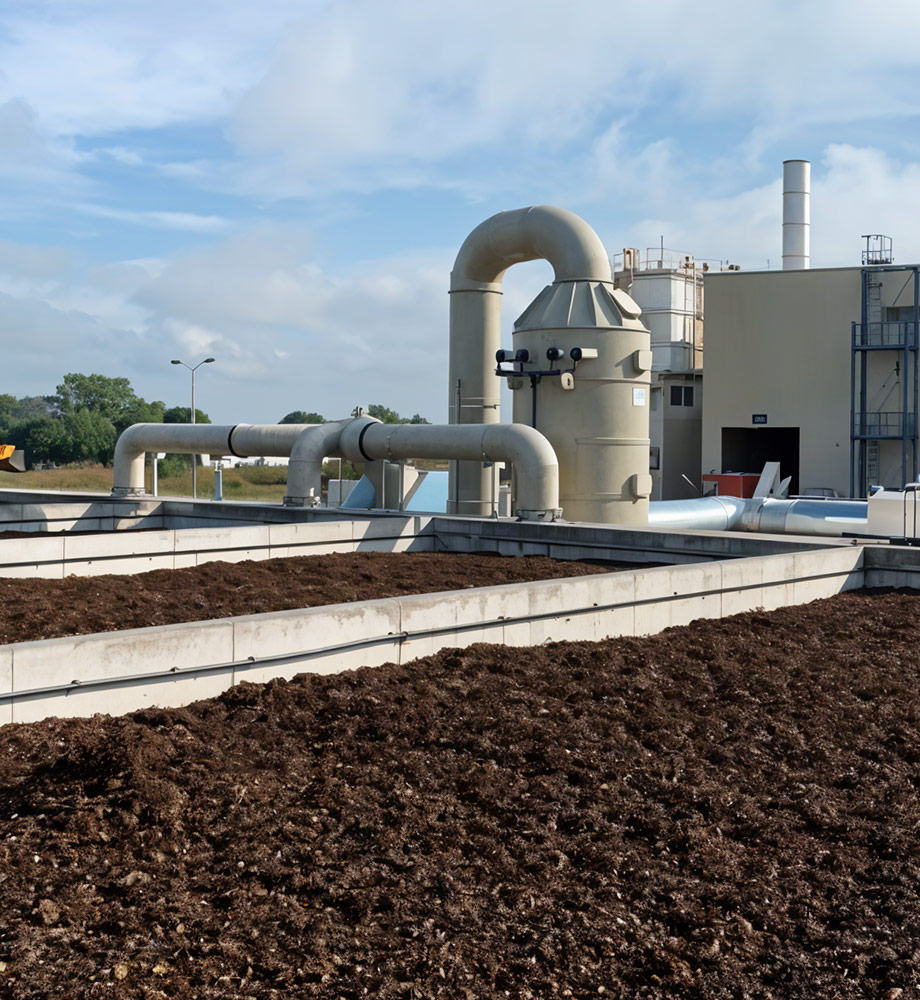Key Features
- FRP Modular Panels: Prefabricated FRP walls, lids and supports form the biofilter vessel. No steel means total immunity to the wet, acidic exhaust environment.
- Engineered Filter Media: Specially selected packing materials (sphagnum, lava rock, synthetic matrices) provide habitat for microbes. FRP grating often supports the media bed.
- Automated Controls: Many systems include sensors and automated water spray for pH and moisture control. FRP enclosures tolerate sprinkler spray and cleaning chemicals.
- All-Weather Design: FRP panels are UV-stable and insulated, allowing outdoor installation without damage.
Benefits
- High Odor Removal: Biofilters achieve very high removal rates (commonly >99% for H₂S and >90% odor removal), making them excellent for foul-air treatment.
- Sustainable Operation: They consume minimal power (no heating needed) and use natural microbes instead of chemicals. The FRP structure itself is recyclable.
- Low Corrosion Risk: With FRP construction, there is no rusting of the vessel even when treating ammonia, amines, mercaptans or other corrosives. This yields longer equipment life.
- Modular Flexibility: FRP biofilters can be shipped in pieces and quickly assembled on site, reducing downtime.
Applications
Common in wastewater treatment plants (odor control), rendering plants, composting facilities, landfills, and food processing. They are also used for industrial H₂S and VOC control (e.g. in pulp mills, petrochemical odor control, or biogas clean-up). In each case, the fiberglass housing provides a durable shell for a sensitive biological process.
Technical Specifications
Biofilters are rated by airflow (CFM) and removal efficiency. FRP biofilter systems handle flows ranging from a few hundred to tens of thousands of CFM. Designs specify media volume (e.g. cubic meters), material density, and expected pollutant loading. Wall panels are typically 2″–4″ thick FRP (Class 1 flame rated) with insulation for thermal stability.
Unique Selling Points
FRP biofilters combine biological performance with virtually no corrosion maintenance. A key USP is the long media life—many FRP systems offer warranties on media up to 10 years. Another USP is cost-effectiveness: compared to packed chemical scrubbers, an FRP biofilter saves on chemicals and energy. Given the increasing focus on sustainability, the green credentials of biofiltration (with FRP enabling longevity) is a major advantage. Over 130 installations worldwide attest to the reliability of FRP biofilters in harsh odor-control applications.

